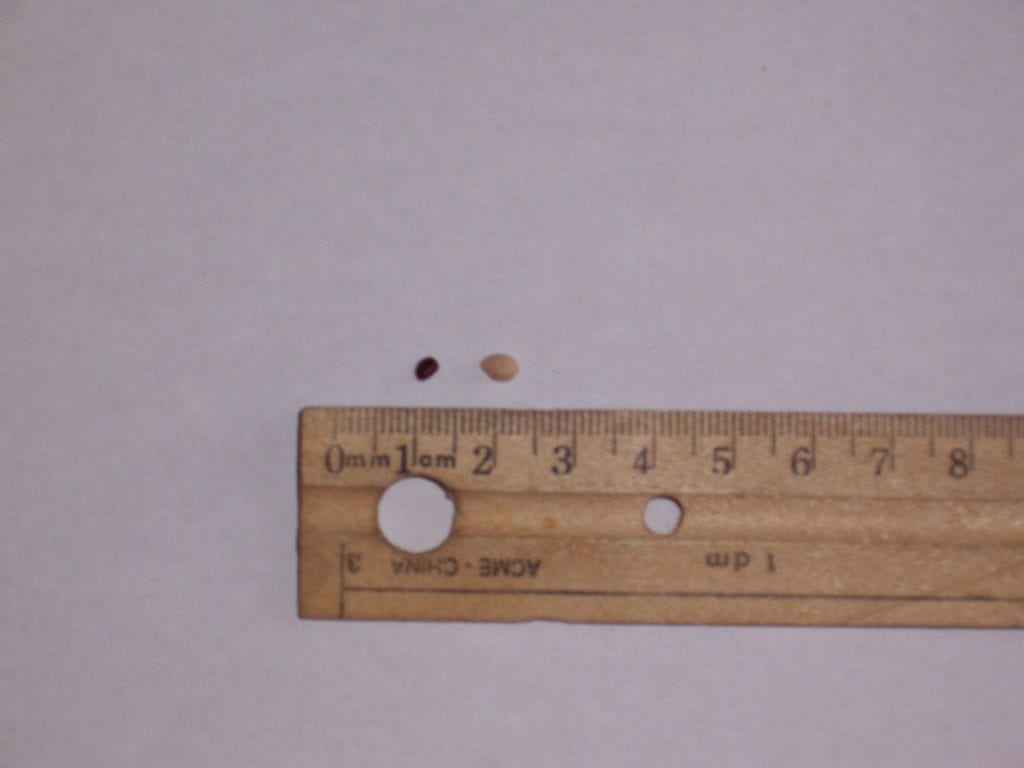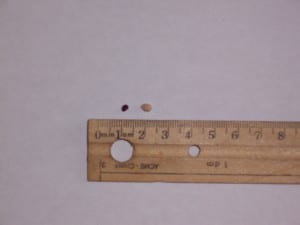

Despite endless New Year’s resolutions and the inevitability of growing older, the past and the present have and shall always be connected by a strong yet invisible thread. This certainly is true for religion teacher Mr. Catlin, who is attempting to germinate Staghorn Sumac seeds that he believes to be from the spring of 1649.
Mr. Catlin first received the seeds from Father Dennis Hegarty, who excavated them in August, 1954 at the grave of St. Jean de Brebauf at St. Marie Among the Hurons near Midland, Ontario. Originally, Mr. Catlin believed they were basswood seeds. But after visiting paleobotanical researcher Rudy Fecteau, he learned that he did not have basswood seeds, but instead he had two different species of ancient Canadian seeds, Staghorn Sumac and Pin Cherry. Each Staghorn Sumac seed is a miniscule four millimeters in length, and each Pin Cherry is 5 millimeters in length. But sadly the Pin Cherry seed shells cracked in the petri dish that encased them, revealing an empty, seedless shell, which means Mr. Catlin’s hopes of germination now rest solely on the fragile shoulders of the remaining Staghorn Sumac seeds. While admitting that there is no scientific evidence that confirms the seeds are truly from the spring of 1649, Mr. Catlin believes they are from 1649 because they were placed over the grave of St. Jean de Brebauf in the shape of a cross, and both the intention and location coincide with that exact time period. Mr. Catlin also mentioned that when they were found, the seeds were not encased in a protective fuzz, which they would have had if they were young.
When asked if he believed that they would germinate, he chuckled and said: “I hope and pray.” When planting them, he also mentioned that he is going to try several different trials, all without the use of pesticides or other artificial methods of helping the tiny seeds thrive. He has already planted one Staghorn Sumac seed in soil, and he intends to plant another that has been soaking in water in order to try and soften its shell and make germination easier. Mr. Catlin also mentioned that if the seeds do germinate, he shall take them back to the Martyr’s Shrine in Midland, Ontario, where they are from, and where he is in charge of the archaeological collection.
But Pin Cherry and Staghorn Sumac seeds have much more to them than meets the eye. These native Canadian plants play an important role in First Nations culture, as they can be a source of medicine and food. In an email interview on November 11, 2015, Faith Rivers, Chair of the New Credit Cultural Committee for the Mississaugas of the New Credit First Nation, revealed the various uses and value of Staghorn Sumac and Pin Cherry. According to an Elder at the Mississaugas of the New Credit First Nation, Staghorn Sumac’s red fruit, leaves, bark and roots can be used to treat various illnesses, such as sore throats, ulcers, open wound, blisters, gangrene, and inflammation, and if the leaves are rolled, they can be used as tobacco. He also stated that: “As children we would pick the fruit and suck the sweet juice from the clusters.” The various parts of the Staghorn Sumac tree, such as the berries, roots, inner bark and leaves can also be used to make differently coloured dyes. Pin Cherry was also ground into flour for the Objibwa, and it has various medicinal purposes too. An infusion of Pin Cherry can be used as a cough medicine. The bark of this tree can also be used as a burn salve and to treat measles, and it can be used it making baskets.
To most people, Staghorn Sumac and Pin Cherry are tree names that are barely recognizable. But to the people of the Mississaugas of the New Credit First Nation, and other First Nations people across Canada, the medicinal and other various uses of these trees have sacred cultural traditions that have been handed down through the generations.
This project, regardless of its results, is very special. Mr. Catlin thinks it is particularly interesting because it ties history, religion, biology, outdoor education, Indigenous culture, and spirituality together into the same endeavor in attempting to get Staghorn Sumac seeds to germinate. He also mentioned that he believes education now is segmented, in which there are different ‘hats’ for different subjects. These subjects do not connect together, which does not prepare people to live in a world of true interconnectedness. He stated: “This is how Indigenous children learn, in a holistic approach.” He also mentioned that Indigenous children are taught by their parents how to live and work in their family and community, and that this unique form of education ties spiritual, scientific, artistic and historical parts of life together.
Despite society’s obsession with shrugging off the old, and welcoming the new, there is something undeniably interesting about connecting with the past through the germination of ancient Staghorn Sumac seeds. It’s not everyday seeds from 1649 may germinate, and it’s not everyday those same seeds weave together so many new and different concepts, that usually do not get along. But because of this project, they have decided to make an exception and stand side by side together.
